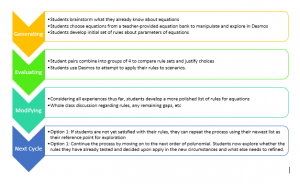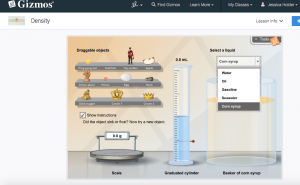The following is an analysis of the four learning environments that aid in using technology to teach math and science. The analysis consists of similarities and differences between Anchored Instruction, WISE, LfU, and T-GEM.
| Anchored Instruction and Jasper | SKI and WISE | LfU and MyWorld | T-GEM and Chemland | |
| Similarities | 1. All models enforced the scientific process that began with creating hypotheses. Once hypotheses are created, data is analyzed, problems are solved and the hypotheses are reworked, adjusted, and modified.
2. All models also favor cooperation among students in groups so to teach students the vital skill of working with others in any field of math or science. 3. All models require balance of direct instruction and inquiry led discussions to help students both learn content, and then use that content in the right contexts. |
|||
|
Differences |
||||
| 1. Mode of Operation | Jasper used videos of complex problems that have inviting and engaging themes to help students learn content by problem solving. | The WISE environment was an immersive experience where students were exposed to content, problems, and methods of recording and analyzing thoughts and data. | The LfU model emphasized the importance of teaching with the right context and involved three phases: motivation, knowledge construction, and knowledge retrieval. | T-GEM via Chemland was an enlightening model that provided students with the three phases of learning: generating hypotheses, evaluating these hypotheses and then modifying the hypotheses based on new data. |
| 2. Type of technology involved | Jasper focused primarily on creating videos with engaging dialogue. | The WISE environment was a completely immersive and interactive computer environment with a large database of projects. | The LfU model gave the teacher freedom to use technologies that would best fit the three phase model. | Chemland was a collection where students could observe different ways of analyzing data simultaneously like videos, graphs, simulations etc. |
As a direct result of analysis of these four learning models, important lessons have emerged. The presence of math and science inquiry is vital in the classroom for students to truly understand and appreciate the ways experts and professionals essentially do math or do science. These learning models are exemplary in guiding teachers to conduct projects in their classrooms that follow the scientific process and at the same time teach content as well. I have learned through this analysis that content and the scientific process can be taught simultaneously instead of compartmentalizing them as instruction days versus lab days.

